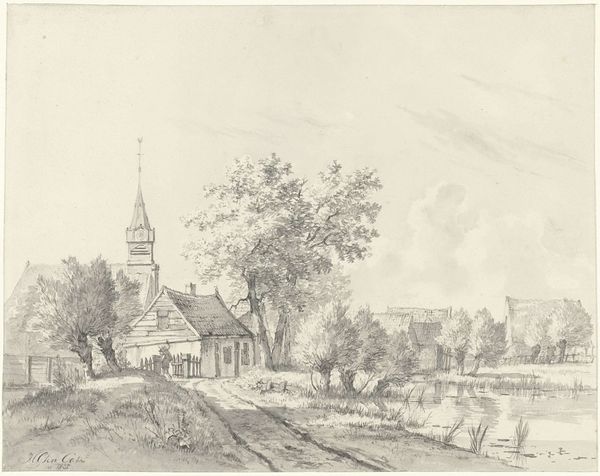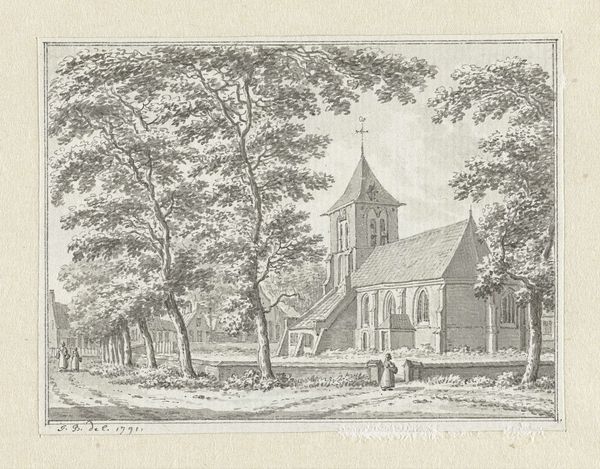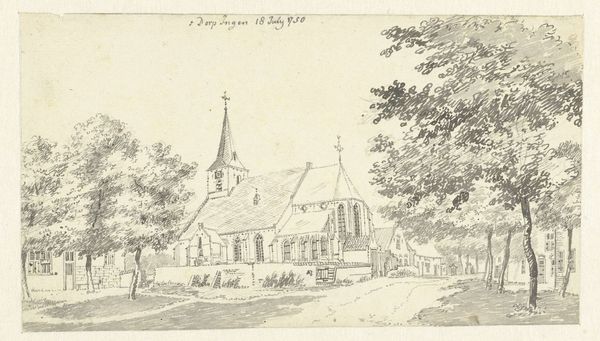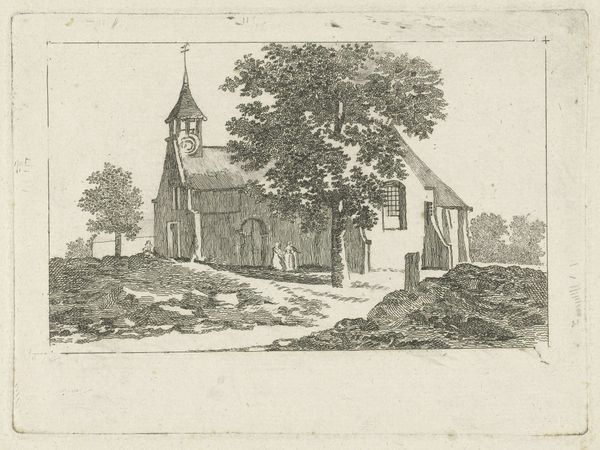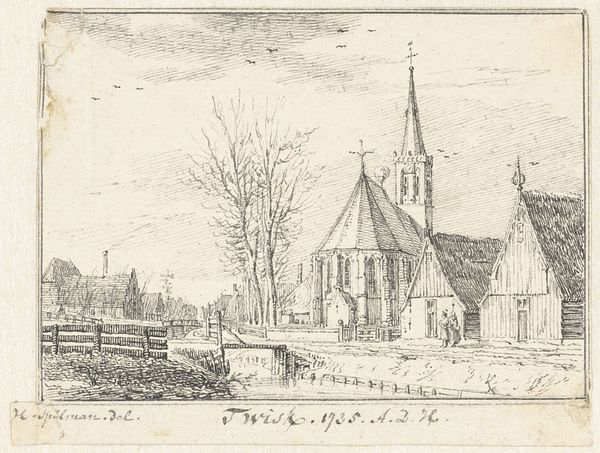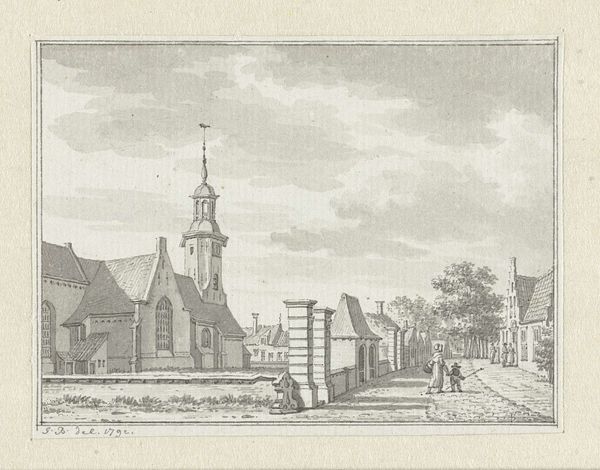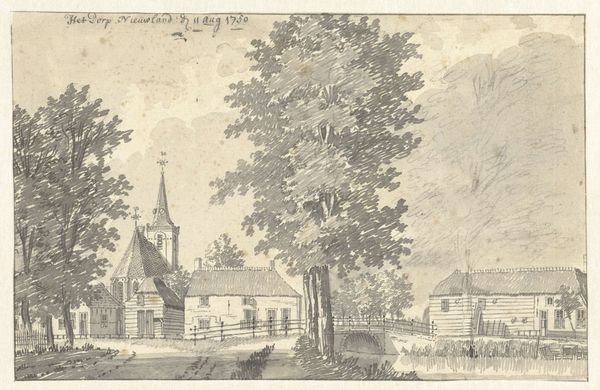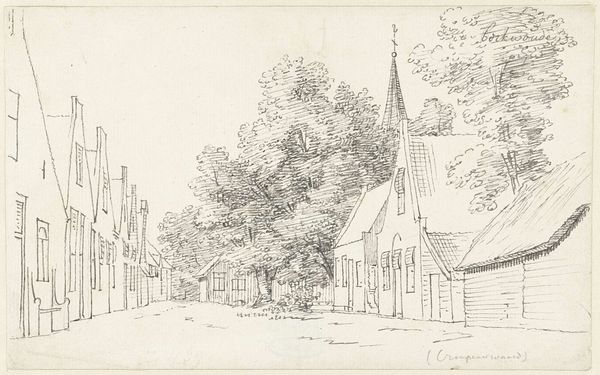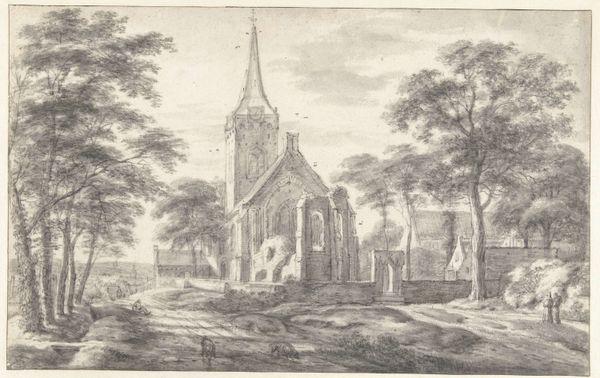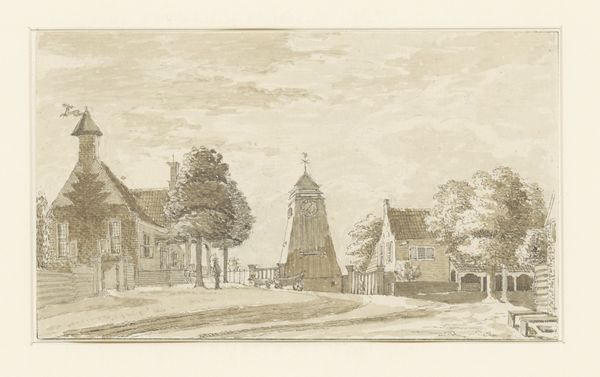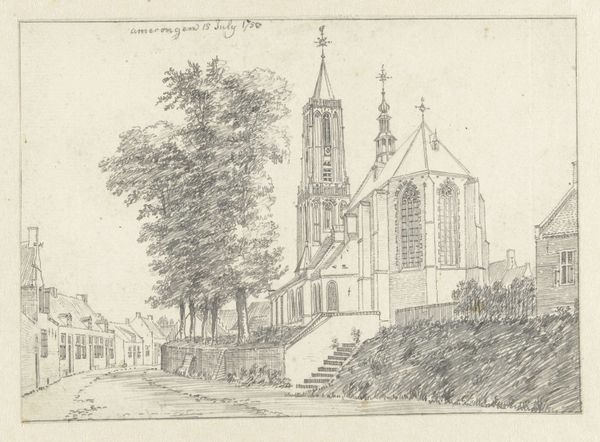
drawing, paper, ink
#
drawing
#
baroque
#
landscape
#
paper
#
ink
#
cityscape
#
genre-painting
Dimensions: height 87 mm, width 107 mm
Copyright: Rijks Museum: Open Domain
Editor: This drawing, "De kerk te Tienhoven," made in 1749 by Jan de Beijer, uses ink on paper to depict a quaint church. It's striking how the artist captured a seemingly peaceful, everyday scene. What stands out to you when you look at this artwork? Curator: It’s interesting to consider this drawing as a material document. Look at the paper itself, the specific ink used, the meticulousness of the lines. What can the materials themselves tell us about the social context of its production and intended audience? This wasn’t some quick sketch; the artist invests time into it, reflecting labor practices. The act of meticulously drawing and etching with ink becomes almost performative, demanding resources and skill. Editor: So, are you suggesting that the materials used and the labor involved give us insight into who this work was made for, maybe wealthy patrons with specific tastes? Curator: Precisely. The artist uses the material elements and the subject matter -- a modest village church – in a specific way, and asks questions of what we conceive as 'high art' itself. By looking at this depiction, we can ask questions on the purpose of such imagery, and what De Beijer conveys about this site of worship within his practice. Editor: It's like we're looking at not just the church, but the whole system that allowed this drawing to exist in the first place! What might that reveal about Baroque art's relationship to broader society? Curator: Exactly! This invites consideration on its consumption, labor, and artistic practice within Baroque society. It prompts a material interrogation and challenges conventional views. It's about considering Baroque's socio-economic environment. Editor: This approach really does transform the artwork. It is no longer just about the landscape it depicts, but becomes a lens to consider its place in a broader framework of 18th century life. I hadn’t thought of it that way. Curator: Indeed! And it pushes us to investigate further the art’s social and economic origins, inviting richer engagement of the materials in art historical discussions.
Comments
No comments
Be the first to comment and join the conversation on the ultimate creative platform.
